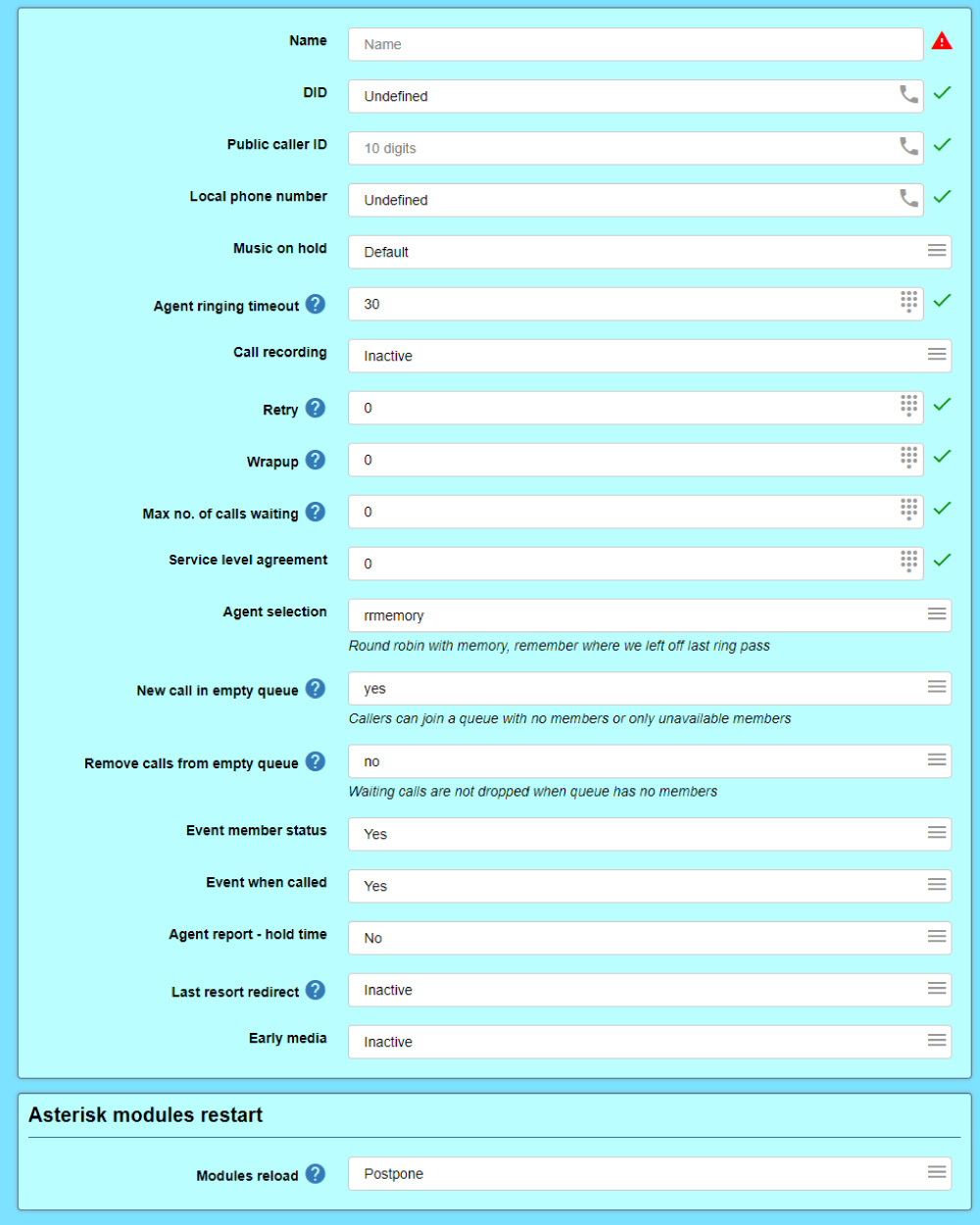Add a waiting queue
To add a waiting queue, the administrator has to access the Queues tab from the account page. You can not add a queue without selecting an account first. The add procedure is initiated by clicking the Add button from the page menu. This button is available only if the administrator has the required permissions.

To add a waiting queue the following properties must be set up:
- Name
- The generic name of the queue inside Accolades.
- DID
- The phone number that the queue is reachable, for incoming calls outside the account. This number has to be unique at a server level.
- Public caller ID
- The phone number that will be displayed to the called device when the queue initiates a call.
- Local phone number
- The number that the queue is reachable from inside the account. This number has to be unique at an account level.
- Music on hold
- Allows the administrator to select a music on hold set (from the sets defined for the account) that will be played to the waiting calls.
- Agent ringing timeout
- The number of seconds that the queue will leave a call to an agent, before considering a timeout.
- Call recording
- Defines if the calls for the queue are recorded to the server.
- Retry
- Defines the interval (in seconds) that the queue will wait before retrying to reassign a call to agents. If none of the agents answers a call, then the queue will wait a number of seconds before restarting to call all agents again.
- Wrapup
- The interval (in seconds) that an agent will not receive any calls, after finishing a call. For the queues with dynamic agents, this value can be overrode by setting up the agent to automatically start an after call pause after a call has been finished. In this case, the agent will have to manually exit the break, when he is ready to receive calls again.
- Max no. of calls waiting
- The maximum number of allowed waiting calls, for the queue. The incoming calls, above this threshold will receive a busy tone. If the parameter is set to 0 then no limit is set.
- Service level agreement
- The number of seconds for calculating
the call level. Two types of indicators are used: SL and SL2.
SL is computed using the formula:
(total answered calls in threshold / total answered calls) * 100.
SL2 is computed using the formula:
((total calls answered in threshold + total calls abandoned in threshold) / (total calls answered + total calls abandoned)) * 100. - Agent selection
- The algorithm used for selecting the agent for a call. A description for each algorithm is displayed under the value of the property.
- New call in empty queue
- Defines the way that the queue will manage the case when an incoming call is received by the queue, but no agent are logged in to the queue.
- Remove calls from empty queue
- Defines the way that the queue will manage the case when no agents are logged in to the queue.
- Event member status
- Defines if QueueMemberStatus events should be emitted (along with many other events) for further processing. The events are emitted by the Manager application (from Asterisk).
- Event when called
- Defines if events are emitted when an agent is called. The events are emitted by the Manager application (from Asterisk).
- Agent report - hold time
- Defines if, before connecting the call the agent will be informed with the waiting time of the caller.
- Last resort redirect
- Defines if the call will be redirected to a phone number when no agents are logged in. Depending on the property value, the interface will display additional inputs for selecting the target for redirecting.
- Early media
- Defines if an audio file will be played to the agent instead of the usual ringing tone..
Asterisk modules restart section defines if the asterisk modules using these settings should be restarted immediately (but ongoing calls can be affected) or just marked for restart at a later date. If postponed then the modules can be later restarted by an administrator using the Asterisk commands option from the Server menu.